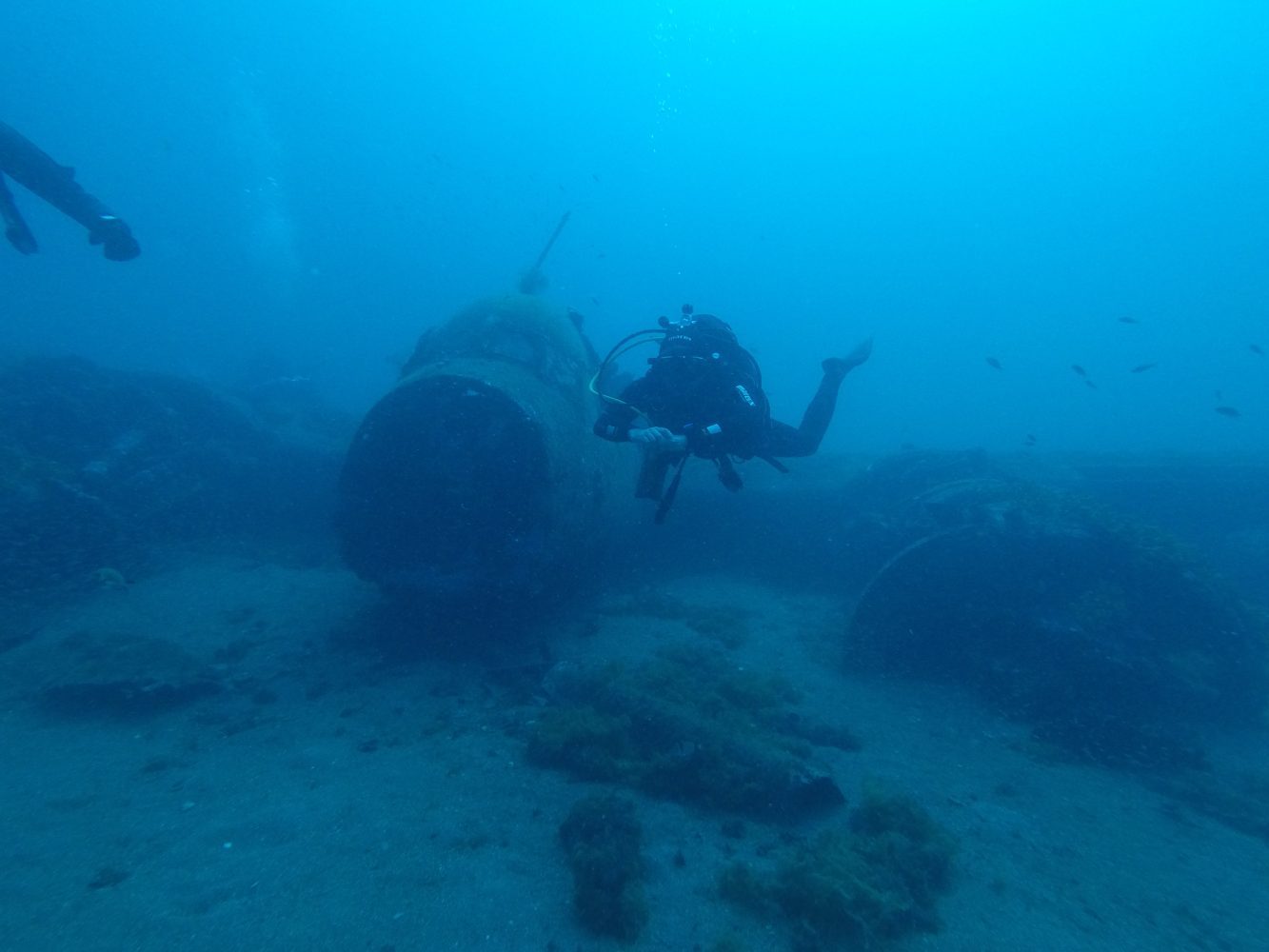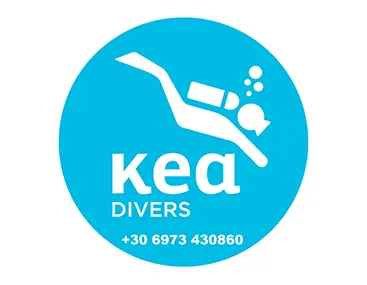Exploration
Surveying and Identifying a Sunken JU 88a German WWII Aircraft
Italian explorer Fabio Giuseppe Bisciotti reports on finding a sunken German WWII aircraft in the South Adriatic Sea and identifying its original airport base and crew. Shades of Deep Sea Detectives! He and his team are also part of a larger operation working with the U.S. Defense POW/MIA Accounting Agency (DPAA) Mediterranean Directorate to identify U.S. military wrecks in the area. Watch this space.

by Fabio Biscotti
InD: Fabio, how often are you and your team out looking for shipwrecks?
Fabio Biscotti: Very often, due to our partnership with the U.S. Defense POW/MIA Accounting Agency (DPAA) Mediterranean Directorate, and the presence of many shipwrecks in our zone, which was the theater of some of the major battles during the two world wars.
How did you and your colleagues hear about the German sunken aircraft?
Thanks to previous expeditions of other teams that we read about in the newspaper, we decided to give our support to this history.
The planes were not very deep. What diving equipment did you use? Open circuit? Closed-circuit?
We made the dives with open circuit nitrox.
What do you plan to do with the information and photos of the Ju88A4
that you have obtained?
We are confident that we have correctly identified the pilot and the crew. We are simply happy to have been able to document this history, and we’re not going to stop. We have many wrecks to study to add to the big puzzle of human history and also to help the families of those lost. It is our pleasure.
You mentioned to me before that your group has partnered with DPAA to help screen and identify U.S. military wrecks in the South Adriatic Sea. Have you started any work with them yet?
We had our first contact with them thanks to Luigi Lacomino from Gruppo modellistico ricerche storiche Foggia (Foggia Historical Research Modeling Group), one of the best military historians in our area. He has written many books and publications about Italy’s military history. When DPAA arrived to talk with him, he immediately contacted us with the objective to create an operative squad. Our first task was to create a complete map of the aircraft crash sites around our area (Gargano-southeast Italy, Adriatic side) and take photos of the various airplanes found in the area. We have much to do and the work will be long and passionate.
I also understand that you established a Project Baseline project in Tremiti Islands National Park, Italy, in 2017. Please tell me a little about the project.
We started this project with the objective to protect our rich sea life environment by monitoring the beauties in the deep. It’s a worldwide treasure that must be preserved and protected. Our diving center organizes daily dives in fabulous places, to help people understand the kind of treasure that surrounds us.
What’s your next big project?
Actually, we are organizing some recon dives on various wrecks and plan to photograph them. We will keep in touch; I am pretty sure there will be a big surprise.
Operations Report
Date: March-July 2019
Location: Santa Caterina di Nardò, Italy
Objective: Recovery of WWII German aircraft/crew identity information
Depth: 36.0 m/118 ft
Wreck length: 14.40 m/47 ft
Wingspan: 20.00 m/66 ft
Height: 4.85 m/16 ft
Wing area: 54.50 m2 /178 ft2

The operational plan was based on information from previous teams that had visited the aircraft wreck site. Its location is 3.3 miles, 282 degrees WNW on a sandy bottom of 36.0 meters/118 feet.
The plane rests in flight attitude and perfectly lies on the sandy bottom broken into two sections, which was certainly caused by its impact with the sea surface. The team made a perpendicular descent on the plane, which was clearly marked by the divers who discovered this aircraft.
The remaining aft part of the plane (easily traceable tail and wheel planes) lies 15 m to SSE from the main body. Its surfaces are completely covered with incrustations due to its lengthy submergence.
As a further confirmation of the origin of the plane, there are traces of swastikas on the stern. On earlier reconnaissance, the previous team found a nameplate with engine identification numbers.
All in all, the wreck appears to be in fair condition despite having been prey to predatory acts against it. What immediately stands out at first sighting is the total lack of propellers and machine guns near the plane. The former were made of wood, which were likely damaged on impact and have likely been eaten away after being submerged for more than seven decades.
March 30, 2019:
The team of four operators conducted a survey of the wreckage and recovered a new element of study, which has been identified as an EZ6-type condenser used in German aviation during World War II.
After carefully studying the right wing, the team found that the holes discovered on the first dive were nothing but small, growing structural failures due to the salt water, demolishing the team’s original hypothesis that the plane was strafed by gunfire. Another hypothesis was based on the lack of exit holes, suggesting that the loss of the aircraft was due to other factors. After careful studies and washes on the recovered parts, we found a total absence of bursts or burns on the condensers.
The EZ6 capacitors appear, from the moment of recovery, in good condition. They are formed by a ceramic base on which the various “elements” rest. Inside the cylinders, the plastic-copper parts appear to be in good condition and, after careful attention, they are almost like new.
June 20, 2019:
Our descent was scheduled for 2 p.m., with almost no current, and we easily reached the plane. The goal of the day was to track down and identify the color of the sunken aircraft. Despite difficulties due to corrosion, we were able to study three samples at different points on the plane. The color identification confirms that it is the classic Luftwaffe green, similar to aircraft green #74 used by various services.
July 3, 2019:

We identified and confirmed traces of the yellow letter on the right side of the fuselage that previous surveys had witnessed. With the help of various historical groups engaged with us in the operation, we were able to identify the letter R, given the angle and breadth of the semicircle found. Immediately to the right a double trace was found that was most likely the letter W.
This thesis is supported by two factors. First, the characters used by the Luftwaffe on its appliances are unmistakable, and W is the only letter that displays the angles of the lines found. The second factor was the discovery by our historians of particular documentation attesting to the loss of three German aircraft in the Ionian, right in the area in front of Gallipoli where the Ju88A4, a World War II Luftwaffe twin-engined combat aircraft, rests. The documents provided a complete identification of two of the aircraft by their side tags, but we knew the third belonged to the KG54 12 Staffel (squad).
We understood immediately that the other aircraft could not be the Ju88 in question, given the fact that they belonged to different staffels where the coloring of the third character was not yellow, but another color. The only aircraft in the area belonging to the 12 Staffel was our object of study; further confirming the hypothesis was the perfect combination of the camouflage pattern found belonging to the KG54 and the yellow letter R.
Furthermore, the discovery of the letter W gives the total confirmation that it is a 12 Staffel, as this letter was used to identify this group.
We concluded that the plane in question is a Ju-88A4 under the KG54 12 Staffel. As a result, we were able to obtain the following information:

Airport base: Grottaglie Airport, Italy
Kampfgeschwader 54, Group IV, 10th/11th/12th Staffel
Crew: unknown
Ofw Brasas: He appears to have been mortally wounded. No other data is currently available.
Uffz Withalm: He was mortally wounded and subsequently died on May 5, 1942. Post-war memorialized in the Cassino Cemetery Block 15 Tomb 179. The same name is mentioned on the plaque of the Graz Cemetery with the degree of Fl.Lt. Flieger Leutnant (Second Lieutenant) and died on April 14, 1942. In both cases the date of birth coincides with the same person.
Gefr Eichhorn: He was mortally wounded and remembered in the gravestone of the lost at sea of the German army and aviation of Kiel-Laboe. Available data: Crashed in the “Mediterranean,” near Isola della Malva.
Gefr Stegmüller: He was mortally wounded and memorialized in the post-war period in the Cassino Cemetery Block 15 Tomb 109.
Mission: Unfortunately, it is not possible to know if it was a training flight or a war flight. Testimonies of the time attest to the presence of two bodies of German pilots in the trap adjacent to the crash site. Furthermore, the 12 Staffel of the KG54 was precisely in the Grottaglie area, thus further confirming this thesis.
Team members: Fabio Bisciotti (team leader), Alfonso De Filippo,Alessandro Aulicino (Poseidon Systems Italia), Rosy De Renzo, Michele Del Vecchio, Simona Pagano, Giustino Riccio, Vincenzo dell’Isola, Matteo Spada
Historical research team: Luigi Iacomino. GRUPPO MODELLISTICO RICERCHE STORICHE Foggia, Elena Zauli delle Pietre (aerei perduti Polesine), Andrea Raccagni (aerei perduti Polesine), Alessandro Zannoni

Recent law school graduate Fabio Giuseppe Bisciotti is a RAID instructor who has long been interested in natural and maritime history. Based at the Aquodiving Tremiti Diving Center in Foggia, Italy, Fabio joined Project Baseline in 2017 to help protect and monitor the underwater environment in Tremiti Islands National Park. In 2018, he partnered with the U.S. Defense POW/MIA Accounting Agency (DPAA) Mediterranean Directorate, to help screen and identify U.S. military wrecks in the South Adriatic Sea. He is currently preparing for a pilgrimage to Scapa Flow for the 100thanniversary.




















































